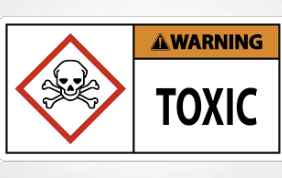Source: https://law.vanderbilt.edu/while-marijuana-will-soon-be-rescheduled-the-federal-governments-drug-scheduling-system-remains-tyrannical/
Earlier this year, the Drug Enforcement Agency (DEA) announced that it would move marijuana from Schedule I to Schedule III under the Controlled Substances Act (CSA), greatly reducing the restrictions on the drug. It represents a historic change in federal marijuana policy and a watershed moment for generations of activists that have sought legalization on a national level.
While many advocates believe the shift bodes well for efforts to relax controls on other Schedule I drugs—including promising psychedelics like psilocybin, MDMA, and LSD– Vanderbilt Law professor Robert Mikos argues that the marijuana rescheduling decision will not pave the way for rescheduling any other drug. Mikos explains that the decision preserves the barriers that make it virtually impossible to remove drugs from Schedule I. He labels those barriers the “tyrannies of scheduling.”
In his paper “Marijuana and the Tyrannies of Scheduling,” forthcoming in Fordham Law Review, Mikos lays out the core challenges posed by the existing scheduling process and offers a solution that would lead to “more rational scheduling decisions that better reflect the benefits and dangers of controlled substances, as Congress intended.”
The Role of Currently Accepted Medical Use in Scheduling Decisions
The CSA creates five Schedules (I-V). Scheduling dictates how a drug is regulated under the statute. Schedule I drugs are subject to the most restrictive controls, and those controls are steadily relaxed as one moves down the schedules.
Congress made all the initial scheduling decisions when it passed the CSA in 1970, but it also empowered the DEA, working in conjunction with the Department of Health and Human Services (HHS), to reschedule drugs based on new information acquired after the passage of the statute. Agency scheduling decisions are supposed to be based on three core characteristics of a drug: its abuse potential, its dependence liability, and whether it has a currently accepted medical use (CAMU). Unfortunately, these characteristics do not always suggest the same schedule for a drug. But as Mikos explains, the DEA has grossly simplified the scheduling process by suggesting that CAMU determinations should trump all other considerations. In particular, the agency has insisted that a drug with no CAMU must be placed on Schedule I, regardless of its abuse potential or dependence liability. According to Mikos, the DEA’s simplification of the scheduling process places tremendous weight on agency CAMU determinations and how the agency chooses to define this particular scheduling criteria.
The Tyranny of Science
In the past, the DEA insisted that the only way to demonstrate that a drug has a CAMU was by completing multiple controlled trials (RCTs) demonstrating that a drug is effective at treating some medical indication, the same requirement for new drug approval under the Food, Drug and Cosmetic Act.
As Mikos has noted in his past work, completing such trials is “notoriously expensive and time-consuming,” requiring strict parameters and a large number of participants. The challenge is even more daunting for drugs already on Schedule I, because the CSA restricts research on such drugs. Due to regulatory restrictions, marijuana advocates have struggled to complete even a single RCT demonstrating marijuana’s medical efficacy. Indeed, in the past 50 years, only one Schedule I drug (Epidiolex) has ever been able to satisfy the DEA’s CAMU test, leading Mikos to label the agency’s science-focused approach the “Tyranny of Science.”
The Tyranny of the Majority
In 2023, however, HHS devised an alternative CAMU test that emphasizes practical experience over scientific research. “Because more than 30,000 health care practitioners (HCPs) had already recommended the drug to their patients in the thirty-eight states with medical marijuana laws,” Mikos explains, “the agency concluded there was enough clinical experience to demonstrate that marijuana has a CAMU and thus could be rescheduled.”
But while this alternative test does not require completing RCTs – and thereby eliminates the Tyranny of Science – Mikos demonstrates that it is no less tyrannical than the DEA’s original CAMU test. According to Mikos, the alternative CAMU test simply “imposes a different form of tyranny: the Tyranny of the Majority.” He explains that to accumulate the clinical experience needed to satisfy the new test, advocates must convince popular majorities in a substantial number of states to legalize medical use of a drug. It took decades to build the public support necessary to do that for marijuana, and Mikos points out that no other Schedule I drug currently commands the same level of public support as marijuana. “Despite growing interest in the therapeutic value of [psychedelics, . . . less than a quarter of all Americans support legalizing psychedelics like psilocybin,” Mikos writes. “By comparison, 90% of Americans support legalizing medical marijuana.”
What is more, even if large numbers of states were to legalize medical use of a substance like psilocybin or MDMA, advocates will also have to convince large numbers of patients, their health care practitioners (HCPs), and their suppliers to risk federal sanctions in order to accumulate the clinical experience HHS demands to satisfy the new CAMU test.
“While marijuana was finally able to run the gauntlet, no other Schedule I is likely to replicate that feat anytime soon. Other promising Schedule I drugs like psilocybin, MDMA, and LSD are likely to remain trapped on that schedule for the foreseeable future,” the paper states.
A New Way Forward
Mikos argues that the agencies did not need to create a new CAMU test to reschedule marijuana. He suggests that the DEA has placed too much emphasis on CAMU in scheduling decisions. The DEA “has no authority, and no good reason, to hold (or place) a drug on Schedule I solely because the drug lacks a currently accepted medical use.” Indeed, Mikos suggests the agency’s emphasis on CAMU runs contrary to the text of the CSA and provides insufficient information about a drug’s benefits and risks to make sensible scheduling decisions.
Rather than propose yet another, less tyrannical CAMU test, Mikos suggests that the DEA should instead take a more flexible approach to scheduling, one that considers all 3 criteria – a drug’s abuse potential, its dependence liability, and whether or not it has a currently accepted medical use (CAMU)—to determine where a drug belongs among the statute’s five schedules.
“Although my approach would not make it any easier to demonstrate CAMU, it would reduce the dominant influence CAMU determinations now wield over scheduling decisions,” Mikos concludes. It would enable the agency to remove drugs like marijuana, psilocybin, or MDMA from Schedule I, even if they lack a currently accepted medical use, if their abuse potential and dependence liability so warrant. “As a result,” he notes, “my approach would foster more rational administrative scheduling decisions going forward.”


















